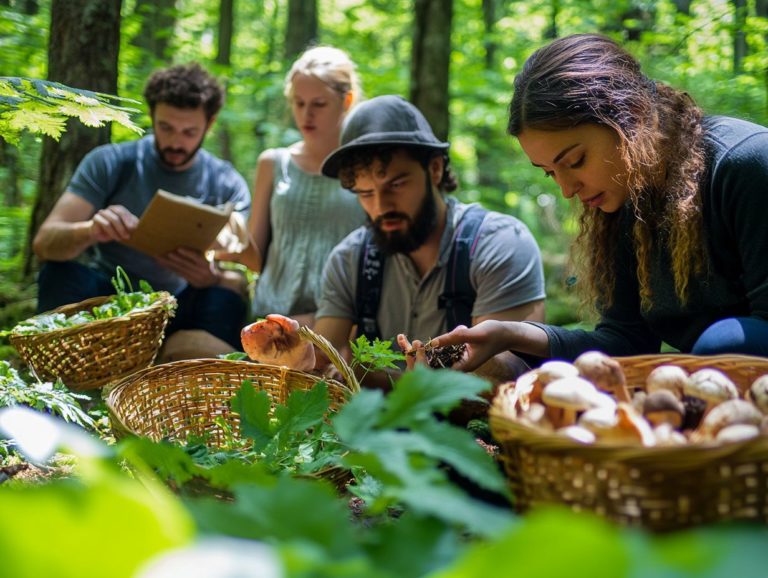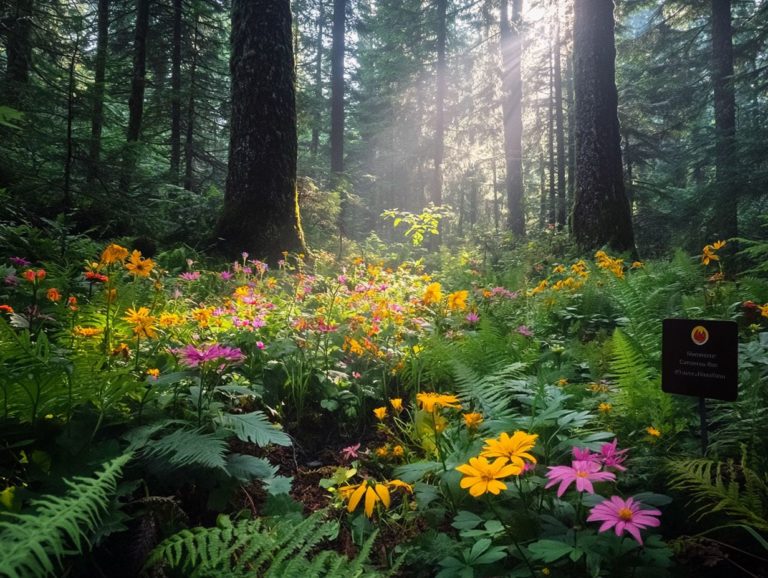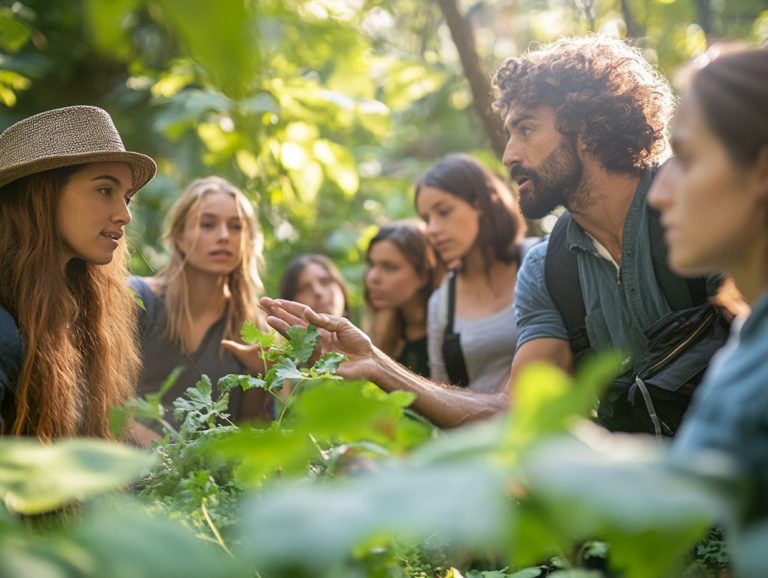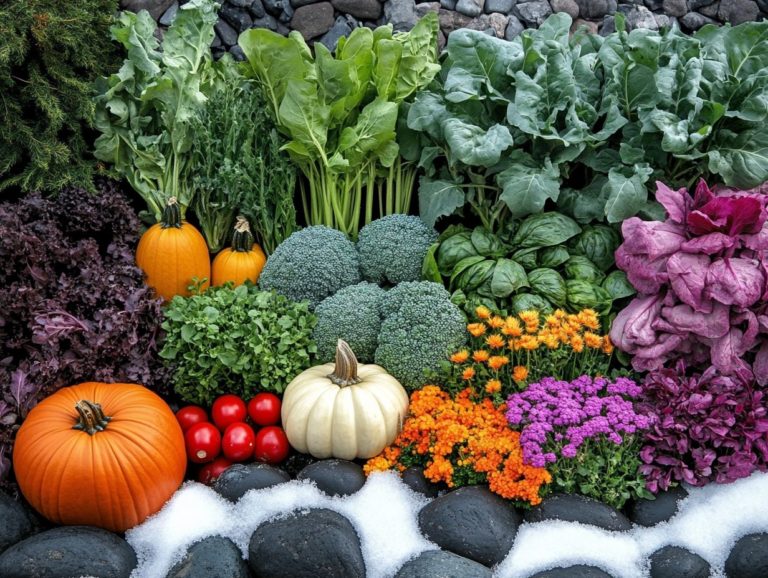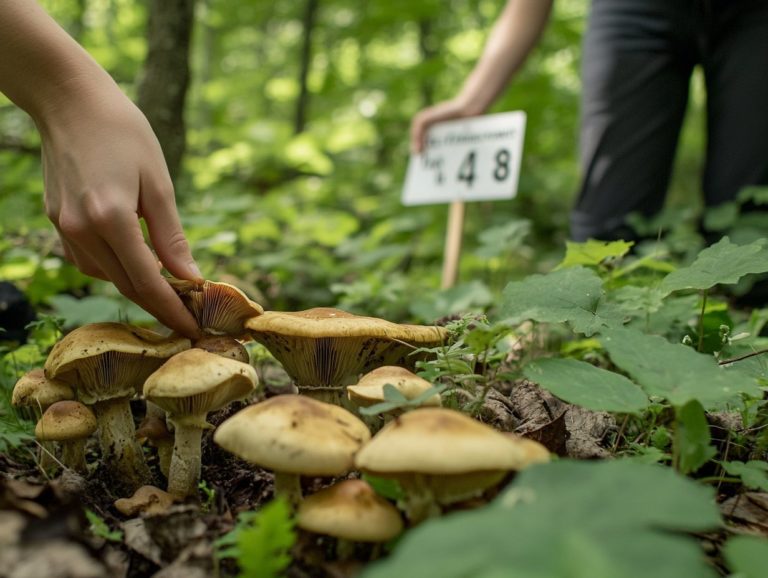Community Foraging: Building Sustainable Practices
Community foraging transcends mere trendiness; it embodies a movement that strengthens your connection with nature and fosters bonds among people.
This article delves into the essence of community foraging, illuminating its profound environmental and social benefits. You will uncover how to establish your own foraging group, essential safety tips, and inspiring success stories that will motivate you.
Common challenges in foraging are addressed, along with practical solutions to navigate them. Join this exciting journey toward sustainable practices that enrich both your community and our planet.
Contents
- Key Takeaways:
- What is Community Foraging?
- Benefits of Community Foraging
- How to Start a Community Foraging Group
- Foraging Safety and Etiquette
- Community Foraging in Action
- Overcoming Challenges in Community Foraging
- Frequently Asked Questions
- What is community foraging?
- Why is community foraging important for building sustainable practices?
- Are there any guidelines or rules for community foraging?
- How can I get involved in community foraging?
- What are some benefits of community foraging?
- What are some examples of sustainable practices in community foraging?
Key Takeaways:
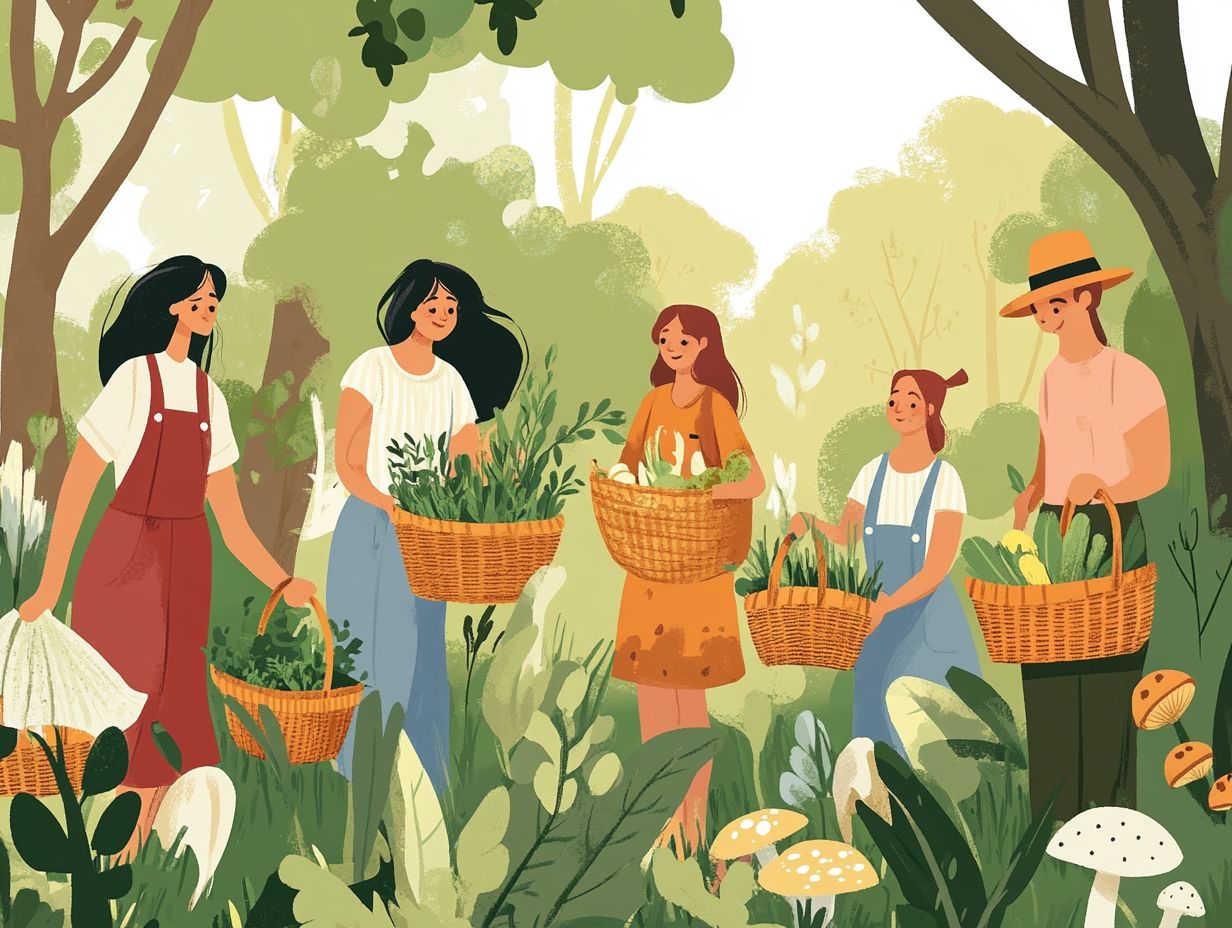
- Community foraging is a sustainable practice that involves gathering food and resources from local, shared spaces.
- It offers environmental and social benefits and can be started by following simple steps to build a strong and sustainable group.
- To ensure safety and respect while foraging, it’s important to follow etiquette and guidelines and learn from successful community foraging examples.
What is Community Foraging?
Community foraging is an emerging practice that invites you to gather wild, edible plants from both urban and natural settings, nurturing a profound connection between you and the environment. To enhance this experience, consider learning how to build a foraging community.
This sustainable approach not only enhances the variety of different plants and animals in an area but also improves community health by fostering a shared understanding of local species and the delicate ecological balance within our ecosystems.
Drawing inspiration from the historical practices of Indigenous peoples, including Native Americans, community foraging emerges as a vital strategy in the fight against soil degradation.
It addresses the challenges posed by money-driven systems and industrial operations that jeopardize both our food security and environmental integrity.
Defining the Concept
Defining community foraging involves grasping its foundational principles of sustainability and the thoughtful collection of edible plants that promote foraging techniques for a sustainable future that enhance local ecosystems.
This practice invites you to engage in a collective effort, where individuals unite to share their knowledge of local flora and champion the responsible harvesting of wild plants. Through this collaboration, a deeper bond is cultivated between community members and their environment, underscoring the vital importance of preserving biodiversity.
As you participate, you’ll learn to recognize a variety of edible species, from familiar herbs to more obscure greens, all while remaining mindful that your foraging activities respect and protect the natural habitat.
The true essence of community foraging lies in its power to educate and empower you and others to nurture and sustain local ecosystems for generations to come.
Benefits of Community Foraging
Community foraging presents a wealth of benefits, encompassing enhanced health for the community, bolstered food security, and a rise in biodiversity—each of which is crucial for nurturing sustainable practices within our environment, as highlighted in foraging: a sustainable food source for all.
By immersing yourself in foraging activities, you not only gain access to nutritious foods but also cultivate a profound understanding of your local ecosystems and the intricate web of urban biodiversity.
This practice also fosters a sense of community and collective responsibility for the environment, positioning it as an essential component of contemporary conservation efforts that honor Indigenous land rights and uphold ethical land management.
Environmental and Social Benefits
The environmental and social benefits of community foraging are truly remarkable, influencing everything from local biodiversity to the health of your community and food security.
By participating in the gathering of wild edibles, you can actively contribute to the preservation of native plant species and their habitats, thereby enhancing biodiversity. This practice boosts your awareness of local ecosystems. It also promotes conservation efforts to protect vital resources.
Engaging in community foraging helps build social connections, as you come together with others to share knowledge and skills, deepening your relationships with both people and the environment. As you discover nutritious, seasonal foods, you not only enhance your health but also strengthen your ties to traditional food practices, ultimately paving the way for a more sustainable lifestyle.
Get started today! Form your own foraging group and make a difference in your community!
How to Start a Community Foraging Group
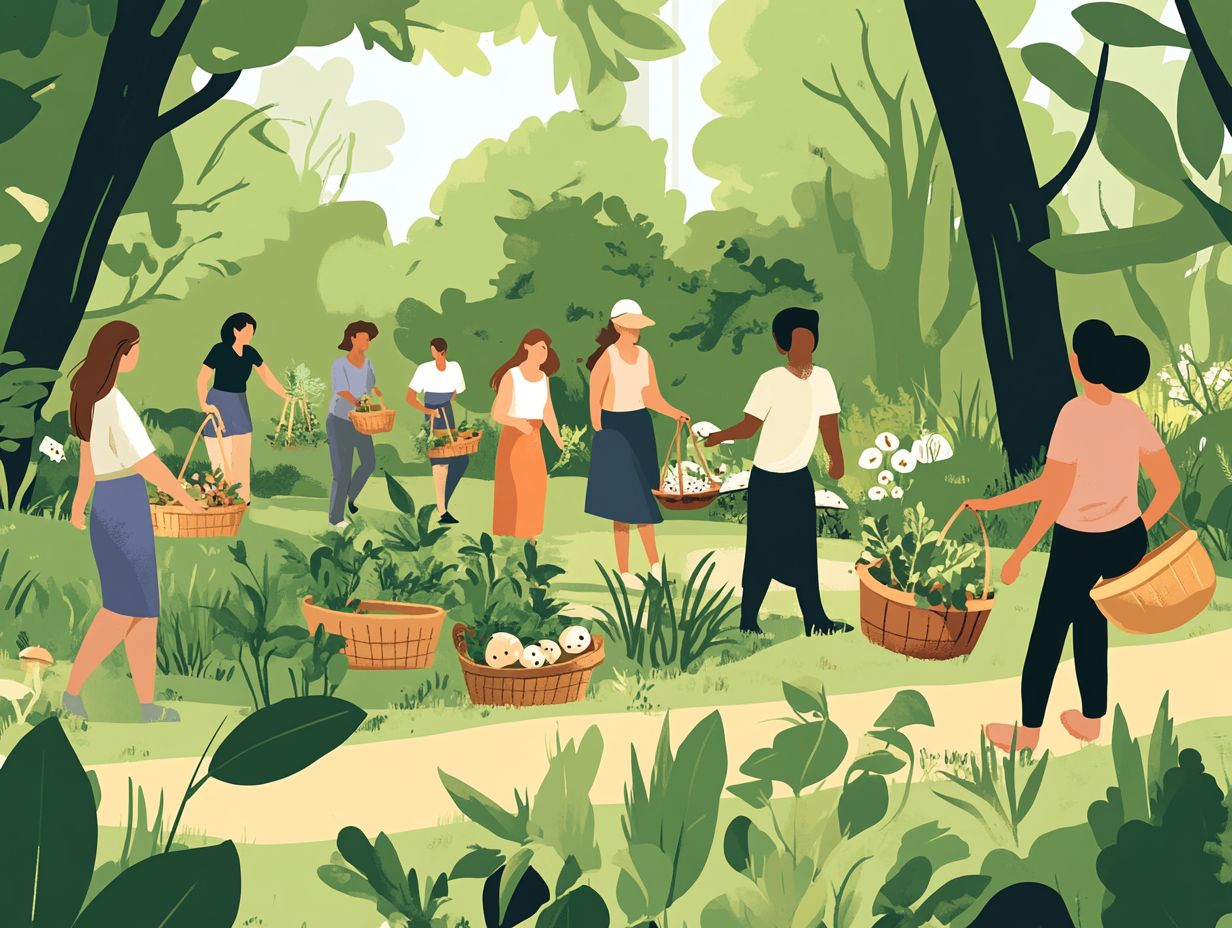
Starting a community foraging group demands careful planning and a commitment to sustainability. Focus on maintaining ecological balance and honoring local edible plants.
Your journey often begins with organizing foraging tutorials designed to educate participants in plant identification. Emphasize safety and ethical foraging methods to ensure a positive experience.
By establishing community gardens or food forests, you can cultivate a supportive environment. This not only boosts biodiversity but also reinforces community bonds and facilitates knowledge sharing.
This approach paves the way for a vibrant urban foraging culture, where everyone can thrive.
Steps to Building a Sustainable Practice
Building a sustainable practice in community foraging requires focusing on several essential steps. Start by educating participants on plant identification and exploring foraging techniques that promote community and the ecological importance of local edible species.
To deepen understanding, actively engage in workshops highlighting identification skills and the significance of biodiversity. Protecting the homes of plants and animals is essential to cultivate respect for nature.
Community involvement is crucial. Local groups can team up for foraging outings, share insights about seasonal offerings, and contribute to conservation projects that protect native plants.
By fostering relationships within the community, you re more likely to encourage a stewardship mentality. This ensures that foraging practices benefit both the environment and the social fabric of your neighborhoods.
Foraging Safety and Etiquette
Foraging safety and etiquette are essential aspects of responsible community foraging. They highlight the importance of informed plant identification and ethical harvesting techniques.
A firm grasp of foraging ethics gives you the power to harvest sustainably. This ensures the preservation of local ecosystems and promotes biodiversity.
Knowing your plants is essential! It keeps you safe and helps the environment. Participants should recognize edible plants while understanding the necessity of leaving sufficient resources for the ecosystem to flourish.
This awareness aligns seamlessly with the sustainable practices that form the foundation of community foraging. Ultimately, it fosters a respectful relationship with nature.
Tips for Safe and Respectful Foraging
When foraging, your top priorities should always be safety and respect for the environment. Emphasizing proper plant identification and ethical harvesting practices is key.
Invest time to familiarize yourself with the local flora. Utilize reliable field guides, and, if possible, join a knowledgeable group or enroll in classes.
Be mindful of ecosystems and their delicate balances. Only forage in areas where it s allowed to avoid legal or ecological issues. Harvest in moderation, ensuring you leave enough behind for wildlife and for the plants to regenerate.
By prioritizing these principles, you can savor nature s bounty while contributing to its preservation for generations to come.
Community Foraging in Action
Community foraging in action vividly illustrates successful initiatives that elevate urban biodiversity. These initiatives foster community engagement through the establishment of food forests and creating foraging gardens and foraging workshops.
These endeavors not only bolster local food security but also serve as inspiring success stories. They showcase the beneficial effects of community foraging on the environment and public health.
By uniting diverse community members around common objectives of conservation and sustainable practices, these efforts weave a rich tapestry of engagement and ecological awareness.
Join a local foraging group today and discover the wonders of nature together!
Success Stories and Examples
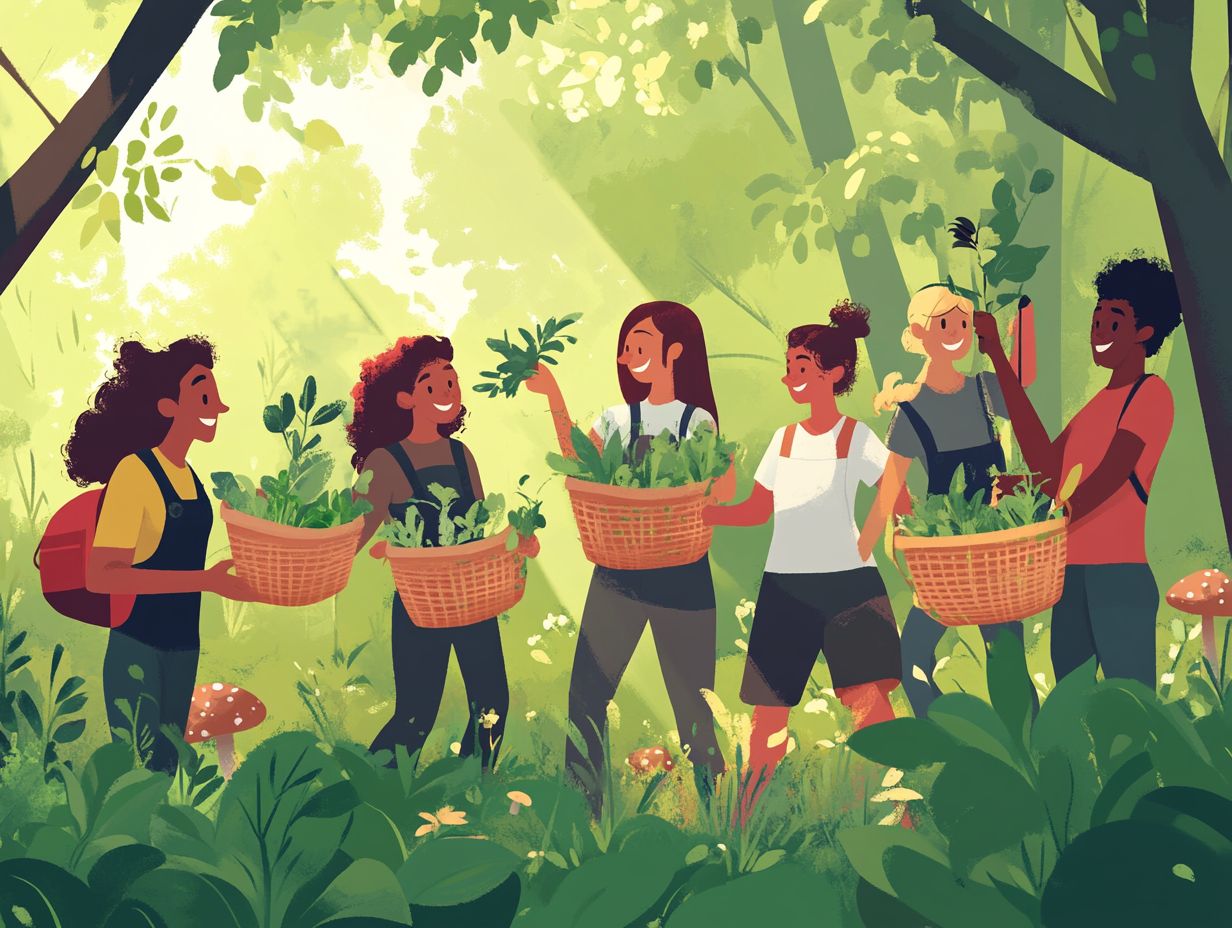
Success stories of community foraging offer inspiring insights into how urban areas can flourish through sustainable practices. One such practice is the creation of food forests, which are gardens where you can grow various fruits, nuts, and vegetables in a natural setting.
Take, for instance, the Edible Schoolyard in Berkeley. Here, schoolyards have been transformed into vibrant gardens that nurture a sense of community while enhancing local ecosystems.
Similarly, the Forage Detroit movement invites urban dwellers to engage in sustainable harvesting. This effectively reduces food waste and promotes conservation efforts.
The collaboration among local volunteers and organizations in these projects exemplifies their considerable impact not just by providing fresh produce, but also by revitalizing native flora and addressing food insecurity within cities. Get involved in these initiatives to enrich your urban experience and contribute to a more sustainable future.
Overcoming Challenges in Community Foraging
Community foraging encounters various challenges that can affect its effectiveness, particularly concerning food security and the sustainability of urban foraging practices. These hurdles often arise from a lack of public awareness, environmental degradation, and industrial operations that jeopardize local ecosystems.
By tackling these issues head-on with effective solutions like community education and planning how to use land effectively you can foster a vibrant culture of foraging that benefits individuals and enhances the broader environment.
Addressing Common Obstacles
To address common obstacles in community foraging, you need to understand the challenges that impede growth and implement practical solutions.
These challenges often encompass regulatory hurdles that restrict foraging activities in public spaces and a general lack of public awareness regarding the benefits of foraging for nutrition and ecological sustainability. Many potential foragers may be unaware of local edible species due to insufficient educational resources or community outreach programs.
Local organizations could host workshops to enlighten the public about safe harvesting practices and the legalities surrounding foraging. Engaging with local government to develop supportive regulations can help designate foraging-friendly areas in public parks, cultivating a thriving community focused on sustainable food practices.
Frequently Asked Questions
What is community foraging?
Community foraging is the practice of gathering and sharing wild edible plants, fruits, and other resources among community members, highlighting the future of foraging communities.
Why is community foraging important for building sustainable practices?
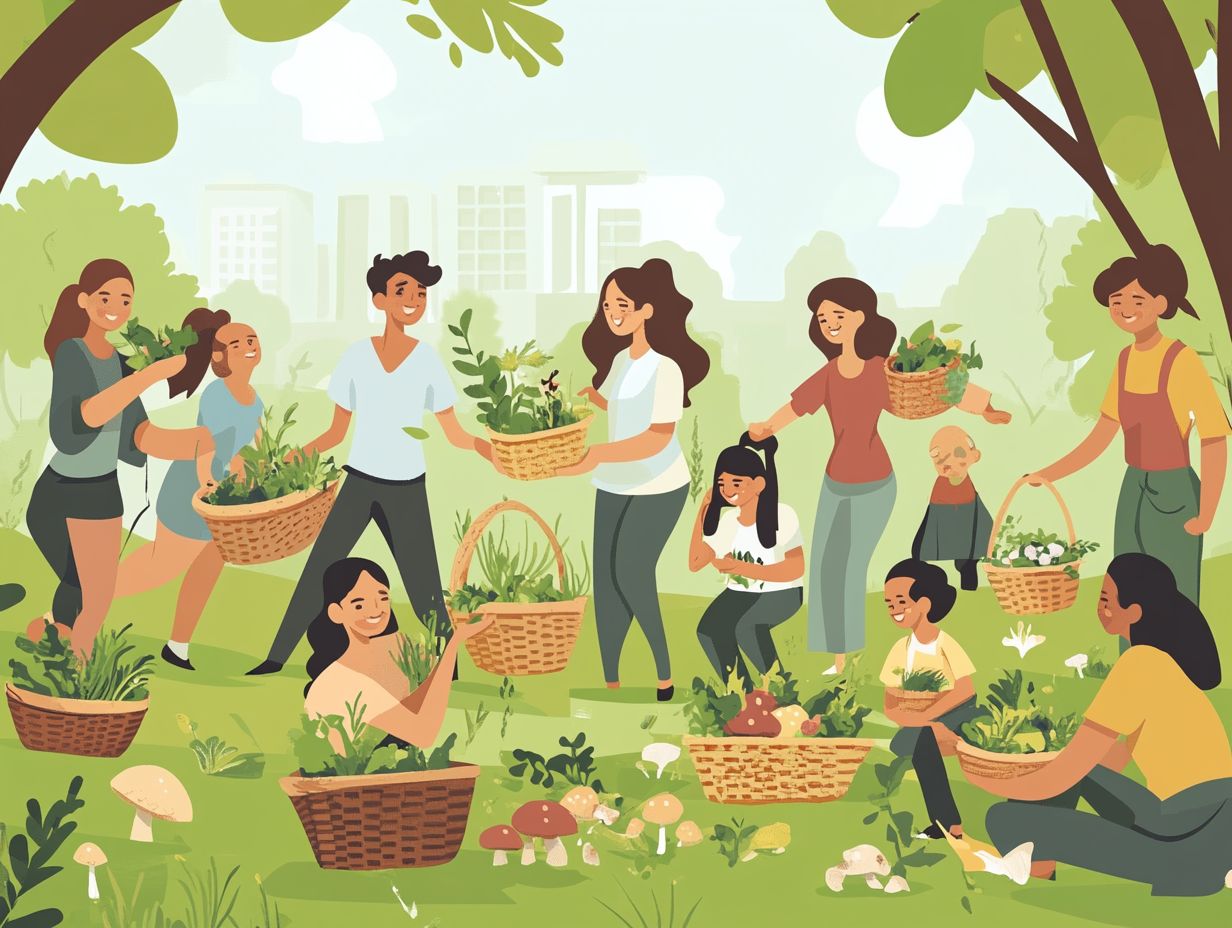
Community foraging promotes the use of local, sustainable food sources and reduces reliance on industrialized agriculture, which can negatively impact the environment. Learning foraging techniques for sustainable living can enhance this practice.
Are there any guidelines or rules for community foraging?
Yes, it is important to follow ethical and sustainable foraging practices. This includes obtaining permission from landowners, only taking what is needed, and respecting the natural environment.
How can I get involved in community foraging?
You can join existing community foraging groups or start your own by reaching out to local organizations and individuals interested in sustainable food practices.
What are some benefits of community foraging?
In addition to promoting sustainable practices, community foraging can foster social connections and strengthen community bonds through the role of community in sustainable foraging by sharing resources and knowledge.
What are some examples of sustainable practices in community foraging?
Examples of sustainable practices in community foraging include using sustainable harvesting techniques, replanting or leaving enough resources for natural regrowth, and avoiding over-harvesting in sensitive areas. For more insights, check out seasonal foraging: building community through edibles.
Join a local foraging group today and discover the joy of sustainable food practices!

